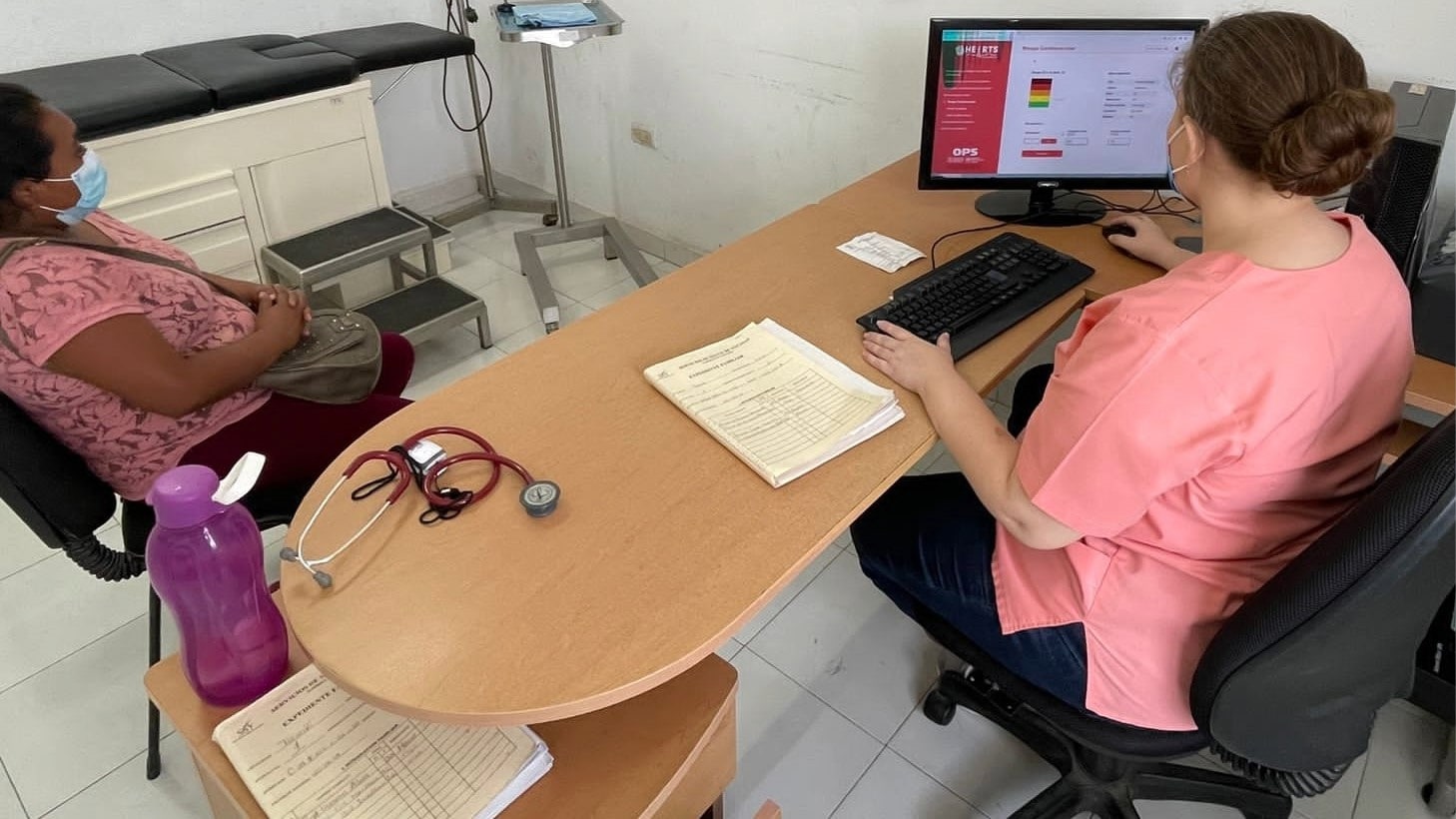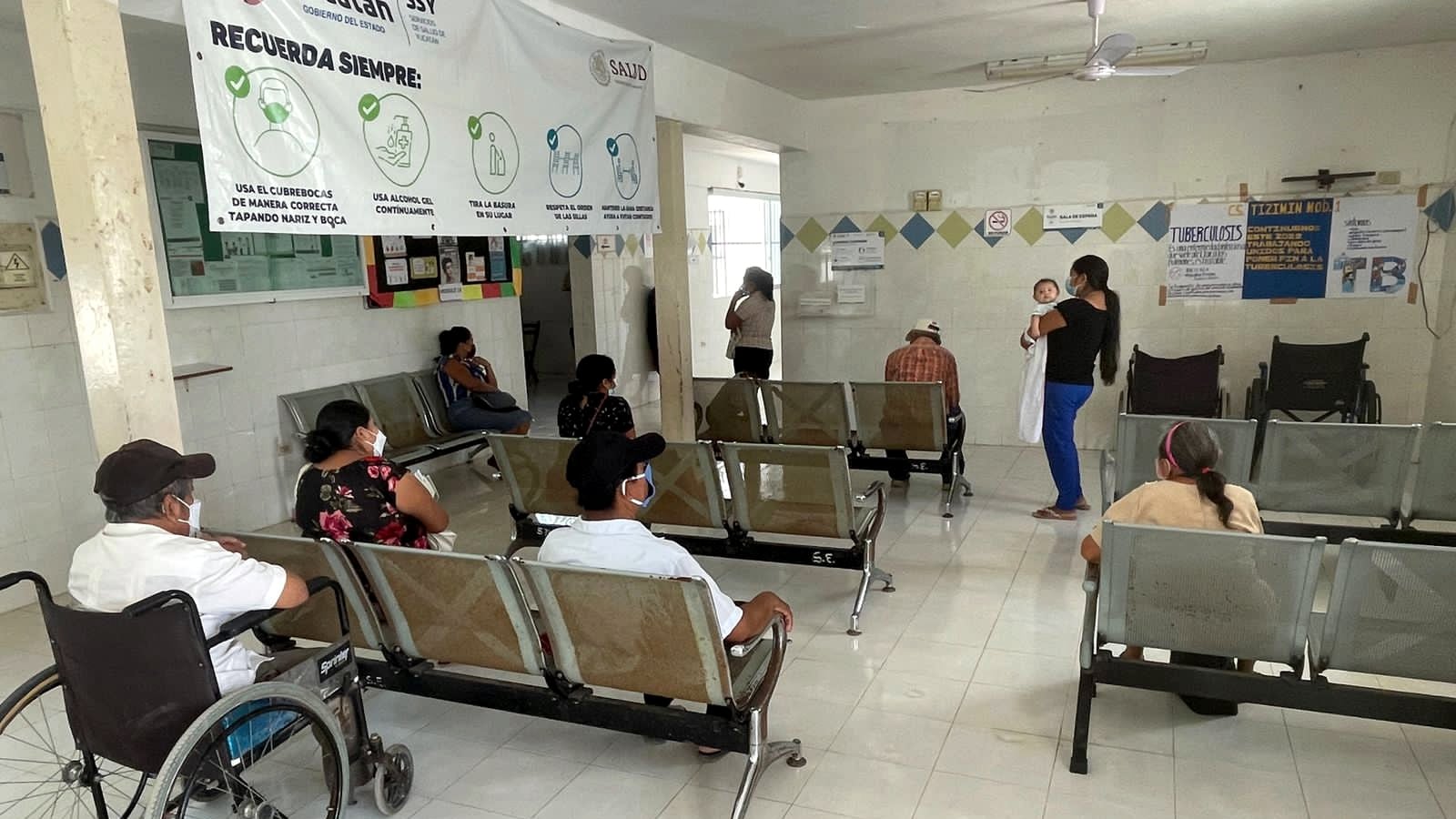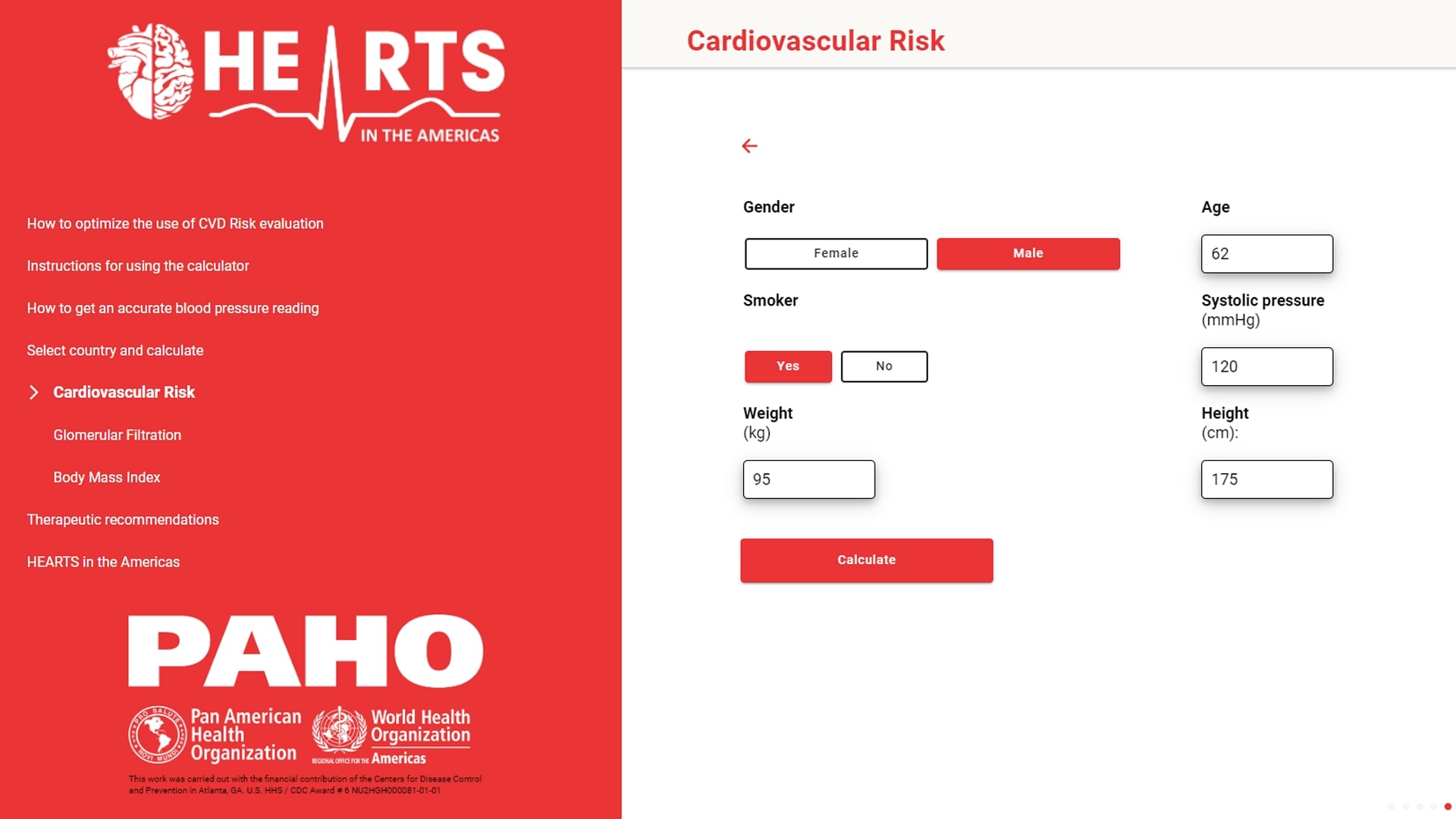At a glance
- Heart disease is the leading cause of death in Mexico, highlighting the need for accurate risk assessment and tailored treatment yet busy healthcare workers (HCWs) often struggle to weigh multiple risk factors and provide personalized recommendations to every individual.
- With CDC support, the HEARTS app was developed to assist HCWs in diagnosing and treating heart disease, offering personalized risk assessments and treatment recommendations based on demographics and risk factors.
- Since its launch, the app has been downloaded multiple times, benefiting patients, and helping HCWs make informed decisions and reduce cardiovascular risks.
Using Technology to Improve Heart Health on World Hypertension Day

On an early morning in April 2022, off the coast of southern Mexico, a primary health care clinic in Tizimín, Yucatan is bustling with patients waiting to see Dr. Lizbeth Briceño. Twenty percent of Mexico's population has hypertension and is at risk for heart disease, which is the leading cause of death in Mexico. For World Hypertension Day 2022, CDC highlights the importance of a new, simple app that helps healthcare workers like Briceño diagnose a patient's risk of heart disease over time and provide the most appropriate treatment. This app was developed by the Pan American Health Organization (PAHO) and supported by CDC.
One Size Doesn't Fit All

Heart disease causes one out of three deaths in the Americas. Hypertension, or high blood pressure, is a leading risk factor for heart disease and affects 20% of adults in the region. Other risk factors for heart disease are increasingly common globally, and include obesity, high cholesterol levels, diabetes, physical inactivity, unhealthy diet (high salt and too much alcohol), and tobacco use. Many people don't know their own risk for heart disease, so healthcare providers play an important role in educating patients. More global data is available than ever before, and better statistical methods exist to create accurate risk prediction models targeted to specific populations. This data shows that treatment guidelines based on multiple risk factors are more effective and less expensive than guidelines based on one single risk factor.
However, it can be challenging for busy providers to weigh multiple risk factors and provide tailored recommendations for every individual they see. For example, the heart disease risk for a middle-aged, slightly obese woman who eats a high sodium diet may differ from a patient of the same age and weight but who smokes a pack of cigarettes daily. Who is more likely to develop heart disease in 10 years? Treating patients who don't really need it can lead to unnecessary expenses and side effects. But providers also don't want to delay treatment for those who can benefit.
A Simple Digital Tool to Help Providers

With the support and technical assistance from CDC, PAHO has partnered with ministries of health and WHO since 2016 on HEARTS in the Americas, a program designed to improve heart disease prevention and management in primary care. HEARTS is active in 1,380 primary care centers in 22 countries throughout Latin America and the Caribbean. It uses simple public health tools to get patients with high blood pressure diagnosed and treated before a more serious illness develops.
Providers all over the world have been using traditional, printed out WHO cardiovascular disease (CVD) risk charts to inform medical decisions. But paper charts do not account for changes in demographics and treatment recommendations over time. PAHO transformed WHO's 2019 updated cardiovascular disease risk charts into an electronic app that can be accessed on a computer or smartphone, which allows users to better understand their CVD risk. Users answer a series of simple questions about demographics and risk factors and receive a color-coded risk result and specific recommendations for next steps and treatment. Released in the summer of 2021, the app is free to anyone, accessible on multiple device platforms, and available in English, Portuguese, and Spanish languages.
Briceño regularly uses the Cardiovascular Risk Calculator in the HEARTS app to assess overall patient risk. "Having this tool available has made it much more practical to estimate the cardiovascular risk of my patients and to guide the recommended prescription based on the result. This is particularly relevant because, in a large center with a high volume of patients, we must make quick and assertive decisions."
Innovations Making a Regional Impact
Since its launch in June 2021, the HEARTS app has been downloaded 89,000 times to mobile devices. The average user engagement time is 2 minutes and 40 seconds. Users have estimated cardiovascular risk over 3.8 million times; meaning that nearly 4 million patients have likely benefited from the app.
PAHO continues to partner with ministries of health and other key partners to promote the use of the app in primary healthcare settings. "I believe that the HEARTS app has helped many patients think about their cardiovascular health, be more aware of their disease, and manage it," says Briceño.
